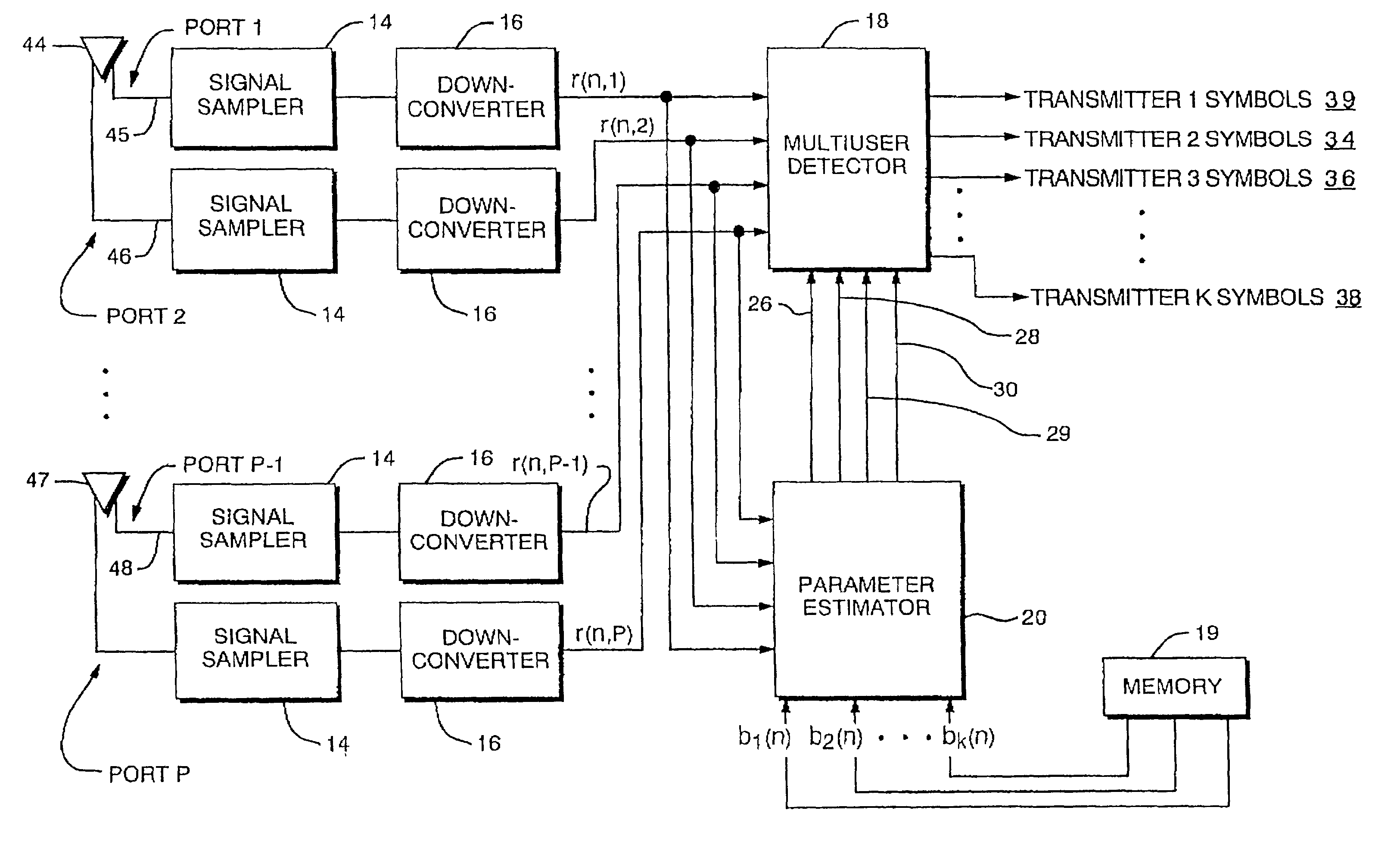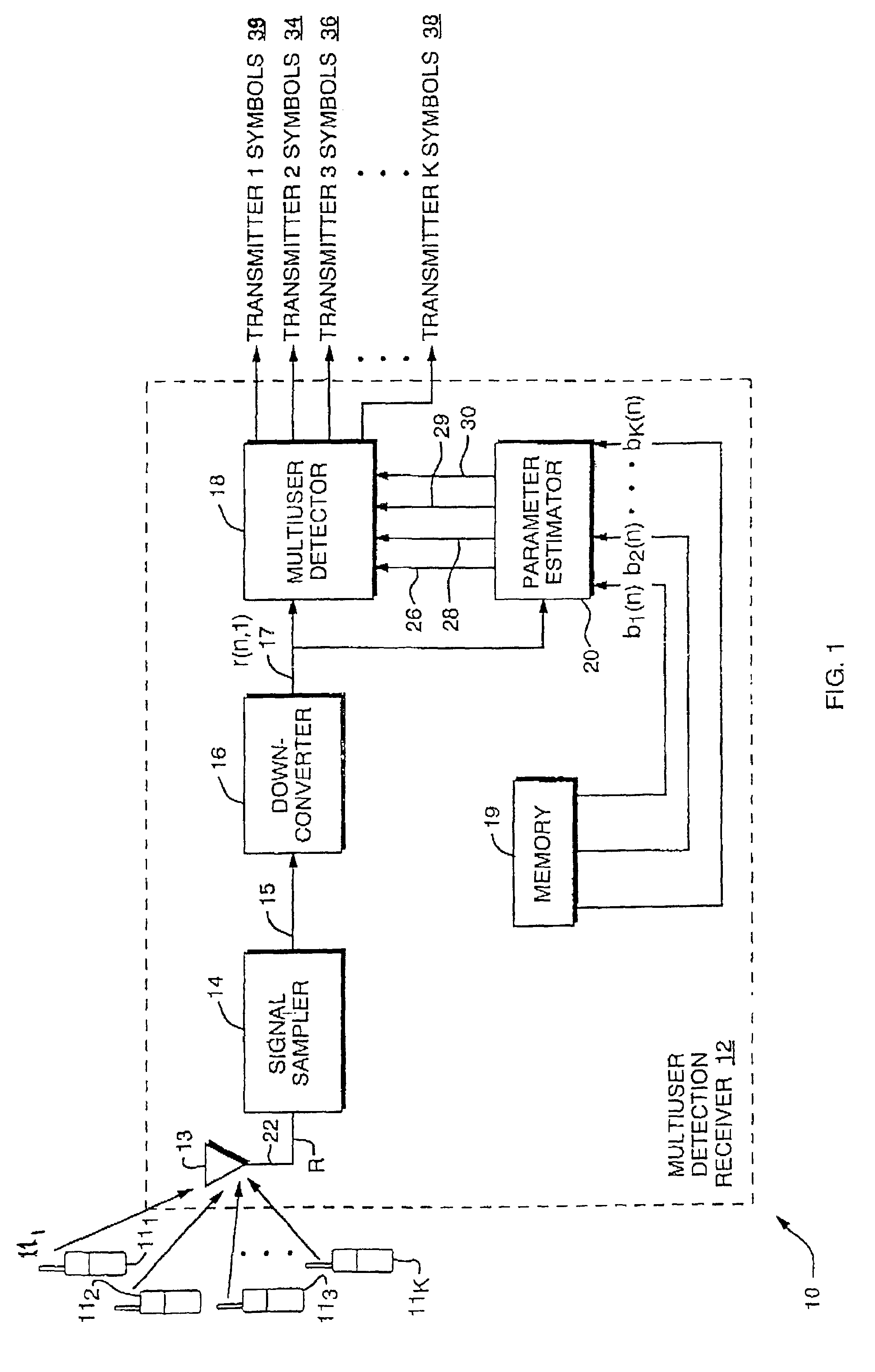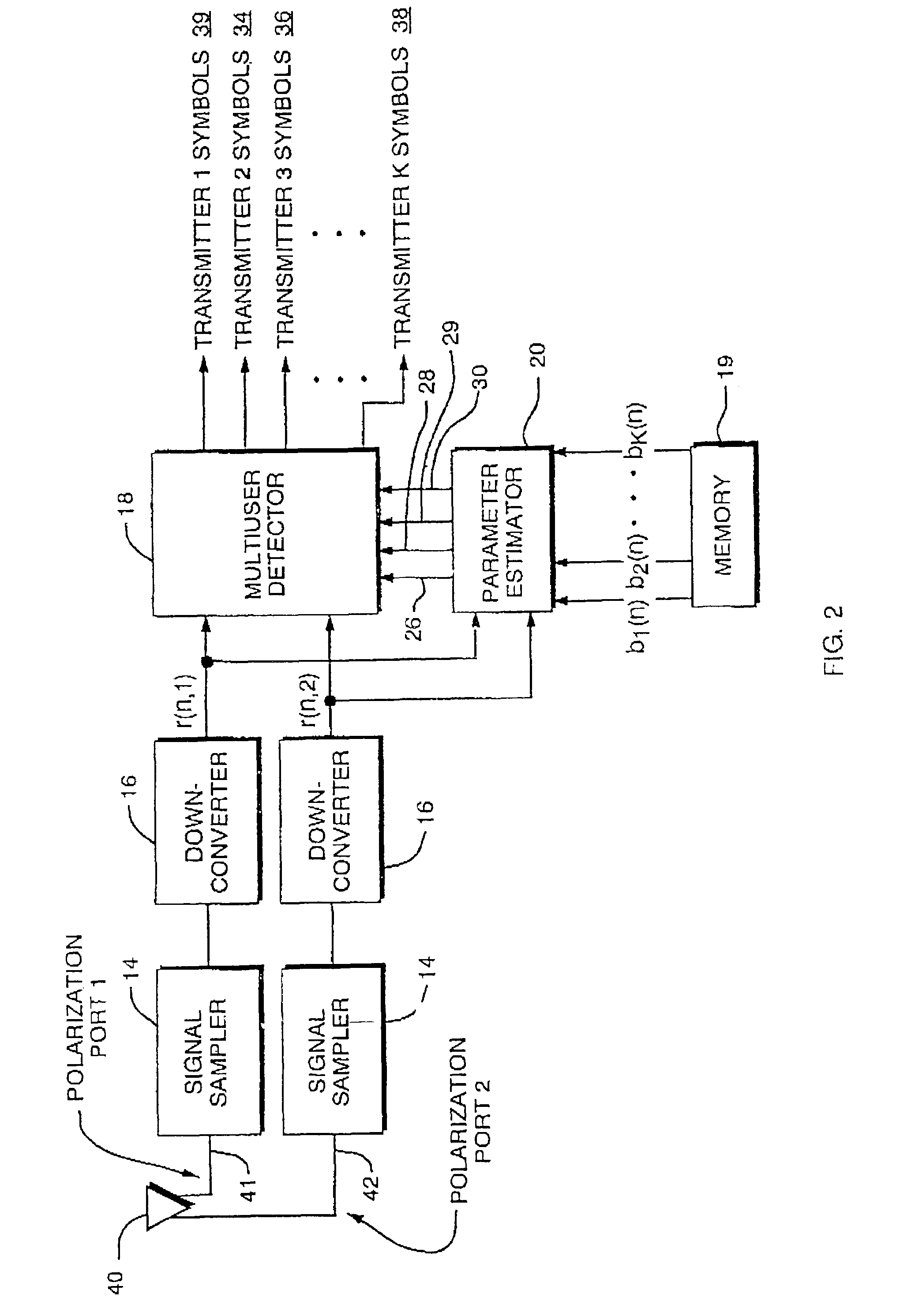Co-channel interference receiver
a receiver and co-channel technology, applied in the field of wireless communications, can solve the problems of ineffective schemes, inability to properly account for real-world wireless communication signals in conventional systems, and inability to realize real-time operation, so as to reduce the number of uncertain bit estimates, space and polarization diversity, the effect of reducing the number of uncertain bits
- Summary
- Abstract
- Description
- Claims
- Application Information
AI Technical Summary
Benefits of technology
Problems solved by technology
Method used
Image
Examples
Embodiment Construction
[0040]In present day communication systems, a central controller normally assigns one communicator to each channel, during a communication channel setup period. Channels may be some combination of a time slot, a frequency, and a spreading code. In most systems, channels are re-used in distant regions, thereby giving rise to co-channel interference. If there is a large distance between the regions wherein the re-use occurs, then signal attenuation reduces the co-channel interference to tolerable levels. This is a necessary result, as conventional receivers cannot demodulate a signal in the presence of significant co-channel interference.
[0041]A Co-Channel Interference Receiver configured in accordance with the principles of the present invention can jointly demodulate two or more signals transmitted on the same channel. Systems utilizing an embodiment of the Co-Channel Interference Receiver could use a similar channel setup format, but the channel assignments would not be limited to ...
PUM
 Login to View More
Login to View More Abstract
Description
Claims
Application Information
 Login to View More
Login to View More - R&D
- Intellectual Property
- Life Sciences
- Materials
- Tech Scout
- Unparalleled Data Quality
- Higher Quality Content
- 60% Fewer Hallucinations
Browse by: Latest US Patents, China's latest patents, Technical Efficacy Thesaurus, Application Domain, Technology Topic, Popular Technical Reports.
© 2025 PatSnap. All rights reserved.Legal|Privacy policy|Modern Slavery Act Transparency Statement|Sitemap|About US| Contact US: help@patsnap.com



